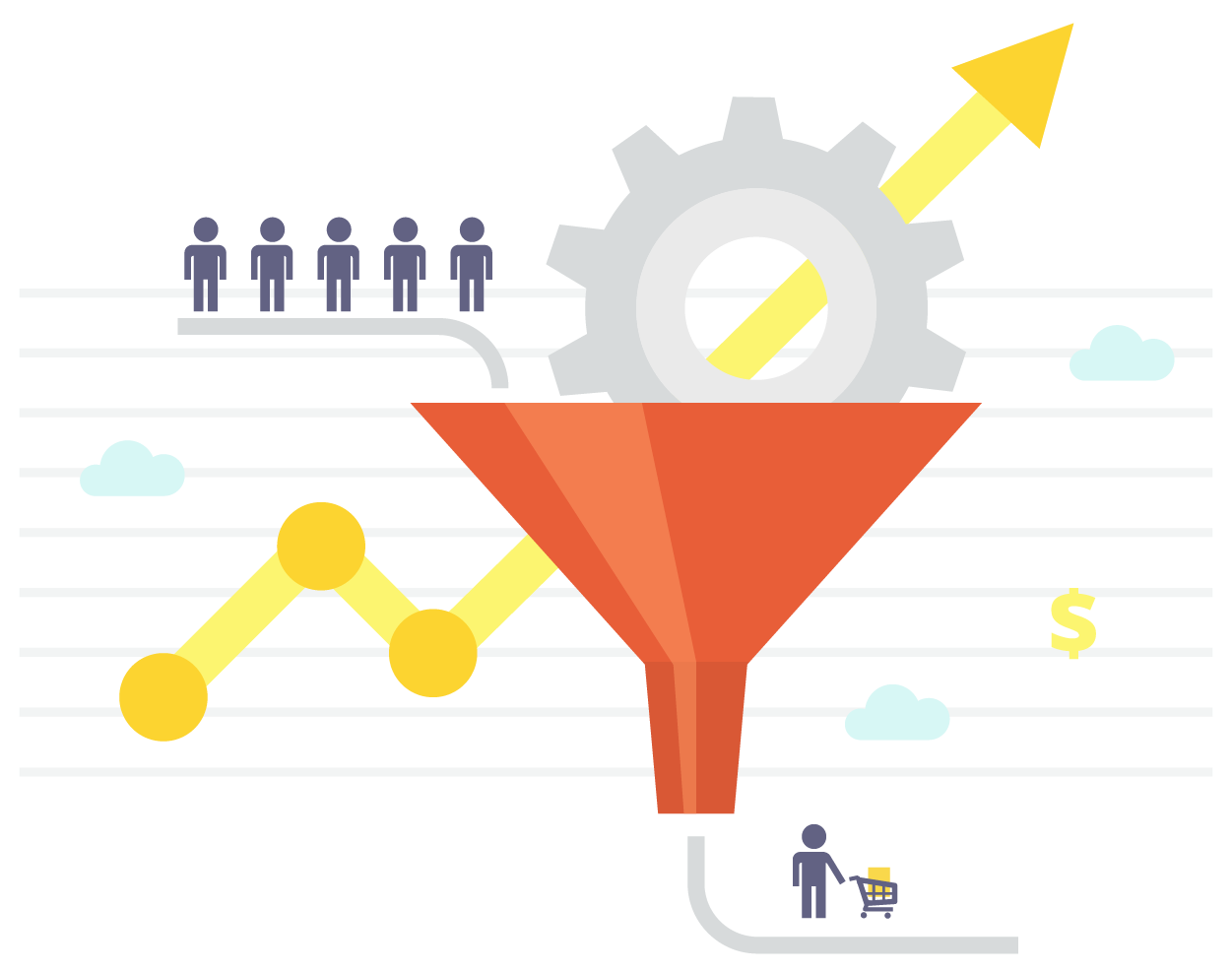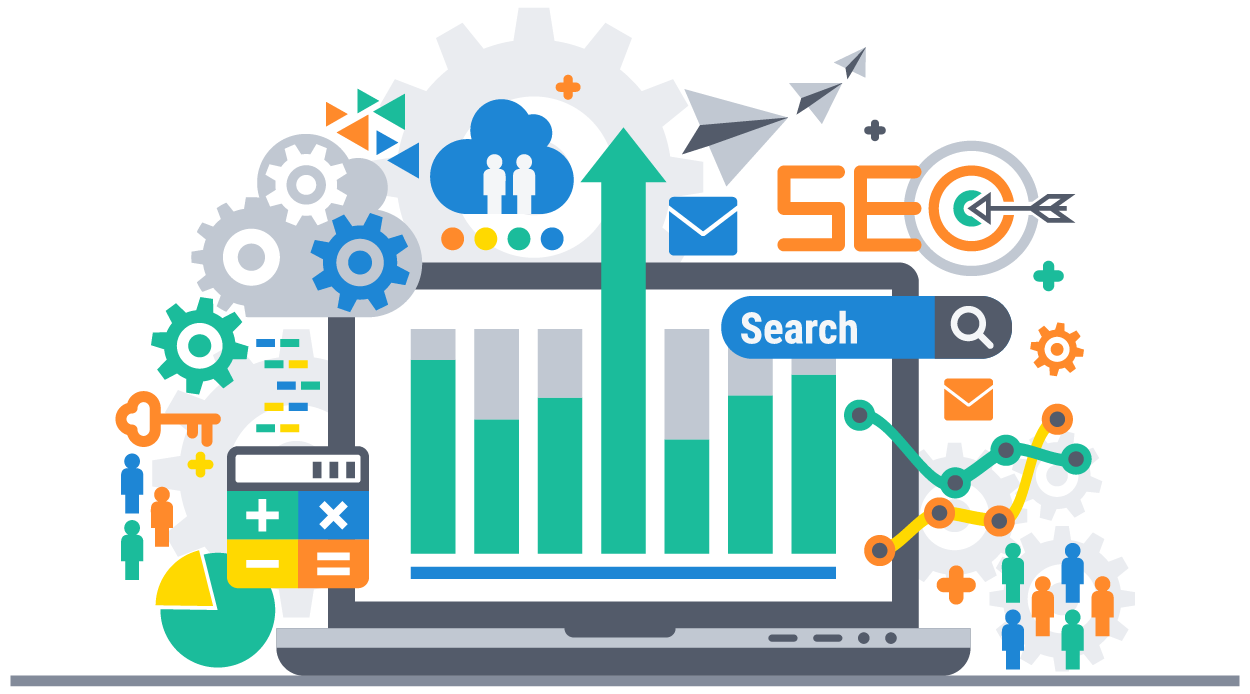Ten years ago, having an active digital presence might have been negotiable, but with each passing day it’s becoming more and more deep-seated in the fabric of who we are and how we function. While we believe that there’s more to delivering value and running a dealership than selling cars online, it would be silly and negligent of us to deny the power of the Web.
Plus, as Google makes it more and more difficult to rank above the fold in the organic search results, paid search through Google Ads is becoming the bread and butter of many businesses, including dealerships.
But the problem with the big move online is that with widespread acceptance, you face a swarm of self-proclaimed experts hocking their services on the cheap and promising meaningless KPIs. That’s why we’ve put together a down and dirty guide about the 6 mistakes dealerships (and the people who run their Google Ads campaigns) usually make. So before you start a campaign or hire someone to manage your account for you, make sure you know these 6 things, so you can avoid making a costly mistake.

Costly Mistake #1
Targeting The Wrong Keywords

The first step to creating an effective Google campaign is developing a keyword strategy. Your keyword strategy will determine what types of keywords you want to target with your campaign. The best keyword strategies rely on keywords that closely relate to your business and your goals.
For this reason, one of the first questions you should ask in regards to your keyword strategy is, “Where in the car-buying funnel do I want to attract leads from?”
If you are trying to attract customers from the top of the funnel, then you might want to target keywords as broad as “Used Car Dealer” or “Ford Dealer”. But if you want to target customers at the bottom of the funnel, you want to be much more specific, like “[Year] Black Toyota Camry Leather.”
So how do you determine which part of the funnel is the best for you to target?
Common practice says to target the people who are deeper in the funnel because the theory is that these people are closer to the purchase—they’re the low-hanging fruit you can easily convert to a sale. But there’s a problem with this point of view if your ultimate goal is to sell more cars and make more money in the process.
You see, in any given geographic area only about 2% of the population is actively shopping for a car at a given time. Plus, of those 2%, the number of people who have moved themselves all the way through to the bottom of the funnel is necessarily way smaller than 2%.

Let’s look at it another way.
According to Think With Google, the average car buyer goes through a series of several small decisions on their way to choosing which car to purchase. Google has distilled these micro-moments into 5 key stages: (1) which-car-is-best moments; (2) is-it-right-for-me moments; (3) can-I-afford-it moments; (4) where-should-I-buy-it moments; and (5) am-I-getting-the-best-deal moments. We can interpret these “moments” as representative of stages of the funnel.
Now let’s revisit the keyword choice “[Year] Black Toyota Camry Leather”. If your keyword strategy has you choosing keywords that are this specific, you’re targeting the very bottom of the funnel. These customers have already picked out the exact car and features they want. The only decision left to make is where to buy it. (Answer: the dealership where they can find that exact car for the lowest price. And they know what that price is because they’ve done 14 hours or more of research.)
But how frequently can you guarantee that you are going to have that exact car? Or have it at the lowest price?
Structuring your marketing strategy in this way will have you chasing the same cars as every other dealer in your market and pricing yourself out of business—all over a tiny sliver of the pie.
But There Is A Better Way.
Because fewer people target the top parts of the funnel, there is a HUGE opportunity to be had here.
That’s because while we know that a whopping 98% of the market may not be shopping for a Nicer, Newer® car, they are dreaming of one. Why? Because the automobile has been woven into the thread of who we are. We care that our bosses, friends, neighbors, and coworkers see us pull up in our car. Our car represents who we are and sits in our driveway as a representative of our family.
In truth, at all times, everybody wants to drive a Nicer, Newer® car. It’s the Miracle Of The Car Business, and it means that if you learn how to market to and attract these Sleeping Buyers, or the people who are just moving from being a Sleeping Buyer to being an Active Shopper, your share of the market just grew exponentially.
Not only that, but by targeting these people, you are able to offer your customers a lot more value in the form of solutions. That’s because they haven’t already found the answers to the first key questions in their car-buying journey, so you can provide help, answers, expertise, solutions—value. By doing this, you become an expert who provides real value and garners respect.

Costly Mistake #2
Your Ad Groups Aren’t Relevant And Don’t Match Your Audience’s Intent

Once you’ve chosen your keyword strategy and constructed your list of keywords, you’ll need to organize them into relevant ad groups.
To do this, group like keywords together based on the intent of the search, so you can create ads that match your audience intent.
To increase click through, the key is to match their intent to your ad.
Costly Mistake #3
Creating Ads That Don’t Convert
Assuming you’ve chosen the right keywords and organized them into strong ad groups, now you’re ready to craft your message.
In order to create an effective ad, it’s important to not only know Google’s restrictions, but also understand what components are most likely to guarantee success.

They key to any successful ad, in Google or elsewhere is having a compelling offer. There are three things that we’ve found that dramatically increase the appeal of an offer and the likelihood that someone will click on your ad. Those three things are scarcity, urgency and believability.

Scarcity is when there’s a limit to the number of people who can take advantage of the offer you’re making.

Urgency is when there is a limited amount of time to take advantage of the offer. Experience shows that when you create a deadline (urgency) response dramatically increases.

Believability is when the customer believes it’s true. It’s important to note that just because it is true doesn’t mean they’ll believe it. There’s a huge difference between believability and truth. They work best when combined, but don’t confuse them and try to substitute one for the other. Your offers should be true and believable.
When used together, these three things pack a powerful punch and dramatically increase the likelihood that you’ll win the click. But creating a great ad doesn’t stop there.

Here are some additional things you should look for in your ads:
Headlines
Headlines are the most important part of your ad. This is a make or break moment because it can determine whether you get the click or they just keep on scrolling. For this reason, you should not lead with your Dealership Name or Brand. This is a waste of ad spend and is not likely to convert at a high rate because people operate in terms of self-interest.
Rather, a good headline should capture people’s attention and get them interested in what you have to say. It should answer the question “Why should I click this ad?” Pulling them further into your ad with a strong benefit statement that makes them want what’s on the other side of the click.
Luckily, in expanded text ads, you have two headline fields, each with 30 characters that appear next to each other, separated by a hyphen. This gives you 60 total characters for what is arguably the most important part of any ad.

Offers
One approach to headlines that we’ve had a lot of success with is leading with a compelling offer. The secret to accomplishing this is to create offers people can’t get anywhere else. Exclusive offers motivate them to act now. The very best offers give people access to something they can’t get anywhere else, and they combine elements of scarcity (there’s limited quantity), urgency (only available for a limited time) and believability (because it’s true, and because there’s a reason why the offer is being made).
Keywords
Because the most effective ads match your target’s intent with your message, it’s important to include the keywords for each ad group in your ad. This is also one of the many reasons why you should have unique ads for each ad group.
Hone Your Description
In your description, you have 90 characters to convey your message to your target audience. What will you say? This is a great opportunity to highlight what makes you unique, or what makes clicking on this ad particularly unique. It’s also a great place to reiterate your offer and include your keywords. Most importantly, set the expectation for what they will find on the other side of the click. Remember, getting the click is only half the battle. The other half is what happens after they click.
Call-To-Action
Ultimately, your ad is useless if it can’t get your target to take action. So make sure to give them clear direction as to what that action should be, whether that’s call today, browse, view inventory, sign up or get a quote.
Manage Mobile
Mobile devices dominate the world of online search with some reports tracking that as much as 80% of online searches occur on a mobile device. For this reason, it’s essential that you manage your mobile presence as much as, if not more than, your desktop experience. You should tailor your mobile experience to the needs of a mobile user.

Costly Mistake #4
Not Aligning Your Bidding Strategy With Your Business Goals

There are two main current schools of thought when it comes to setting up your bidding strategy, Max Cost-Per-Action Bidding and Max Conversion Bidding. Which one you choose will depend on your business goals.
The Max Cost-Per-Action strategy is all about helping you get as many actions as possible at, or below, your preferred price. For example, if you want your action to be conversions, and you want to acquire each action at $15, the Max Cost-Per-Action bidding strategy will optimize your campaigns accordingly. It’ll adjust to help you acquire individual actions at, or under, $15 each.
Meanwhile, instead of focusing on the price per action, the Max Conversion strategy focuses on your budget as a whole. This strategy is aimed at getting you the maximum number of actions based on your overall budget. This may mean you’re paying more per individual action on certain days, but overall this strategy optimizes to make bids that maximize your budget.
Costly Mistake #5
Paying For Bad Clicks
The first thing you’ll want to do after you start getting some traffic is to inspect which searches are triggering your ad. It is common for an ad to be served for an unexpected set of keywords. If this goes unchecked, it will result in a major waste of ad spend because you’ll be paying to show your ad to people who aren’t even looking for what you have to offer.
For this reason, you’ll want to develop a negative keyword list, so you don’t waste any more money on them. If you’re outsourcing your Google Ads campaigns, make sure you talk to your provider about their negative keyword strategy.

Costly Mistake #5
Failure To Optimize Your Campaigns

Now that your accounts are live, it’s time to manage and optimize for results.
Google Ads can be a beast to manage because you have to optimize for effectiveness at every level, from keywords and keyword strategy to ad groups and even specific ads within each group. That means that you need to be keeping a close eye on each individual keyword’s click-through rate, weeding out those that don’t deliver results and adding to your negative keyword list to better target spending.
From there, you can work your way out, examining the results each ad group is delivering. As time passes, you might discover that entire ad groups aren’t delivering at the rate you thought they would and you may need to re-examine your keyword strategy.
Because each ad group will have multiple ads with unique copy, you’ll also need to be checking in on ad performance and replacing ineffective ads. Additionally, you’ll want to make sure that you’re keeping your ads fresh. It’s best practice to have 2-3 different versions of your ads for each ad group and to have them rotating. This will allow you to fine-tune which offers and headlines work the best. Plus, Google might like one ad more than another and reward you with lower CPC. By regularly updating your ads, you may also see more clicks. This is because one ad might resonate more with your audience than another.
At the end of the day, properly optimizing accounts can take a lot of time. So we recommend you have personnel dedicated to working in your accounts every day to make sure you are seeing the best results possible.

THE NEXT STEP...
We work with hundreds of dealers across the nation on an exclusive basis to implement these strategies and more to double their traffic leads and sales. To check to see if your area is open and available, click here.



